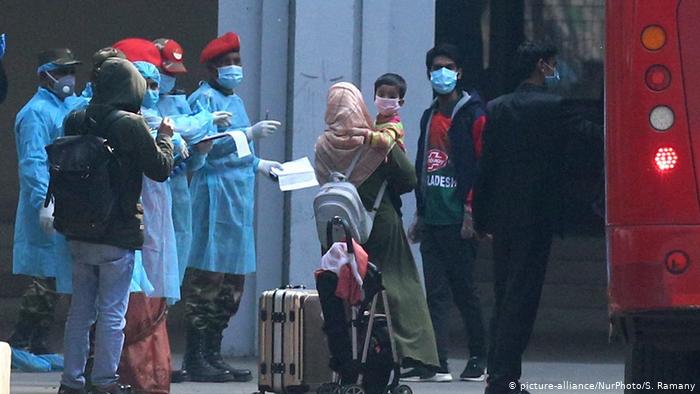According to experts, a slow increase in COVID-19 infections is not only, particularly in terms of critical cases, is not just limited to India but the entire SAARC region.
Although the low figures are clearly a result of low testing rates, experts are stressing to study the impact of pre-existing immunity, as well as the COVID-19 related lockdown and social distancing measures that have been implemented in India and its eight neighbouring countries of Pakistan, Bangladesh, Bhutan, Nepal, Sri Lanka, Afghanistan and the Maldives.
“All governments in South Asia have responded rapidly to the crisis, but their task is daunting. Governments have imposed social-distancing measures, introduced relief packages to secure access to food, and provided for delays in payments on taxes, rent, utilities and debt service,” said a ‘South Asia Economic Focus’ study, published by the World Bank this week.
According to the study, a sharp fall in economic growth rate is predicted for all SAARC countries despite the fact that they reported much lower infection rates compared to the worst hit countries including China and the US.
The eight SAARC countries account to just 1.1% of the total cases of COVID-19 around the world. And when it comes to COVID-19 related deaths, they account to just 0.49% of the world total.
India tops the list of COVID-19 cases in South Asia followed by Pakistan while Bhutan has the lowest number of positive cases.
“It appears that our neighbourhood has shown very low number of cases and fatalities per million population as well,” P.S. Raghavan, the Convenor of the National Security Advisory Board, said.
“It is worth studying the causes for this common trend in South Asia. Is it efficient handling by the governments, low testing rates or are there other underlying reasons for this?” he asked.
NITI Ayog CEO Amitabh Kant recently took to social media to tweet a study pointing out that the number of positive cases arising from tests are much lower in Indian than these countries. It is true as India showed about 4.4% positive cases compared to 19.8% in the US, 41.8% in France and 15.1% in Italy.
The number of positives amongst tests in Pakistan (9.54%), Bangladesh (10.06%) and Sri Lanka (5.12%), are lower than those in Europe and the U.S., although this might increase as more and more tests are beign conducted every day.
“Despite increased testing, our percentage of positive cases is still low compared to others. India’s strong measures on travel restrictions, social distancing, Janata curfew & lockdown have paid dividends,” Kant said, attributing the low figures to the government’s measures.
Most SAARC countries have adopted international travel bans, lockdown of manufacturing and personal activity, and prohibition of religious gatherings until now to contain the spread of COVID-19.
Although the WHO has not validated the findings, the Indian Council of Medical Research (ICMR) will next week begin a separate study on the efficacy of the ‘BCG’ vaccine, which one study has linked to higher COVID-19 immunity.
PNN



